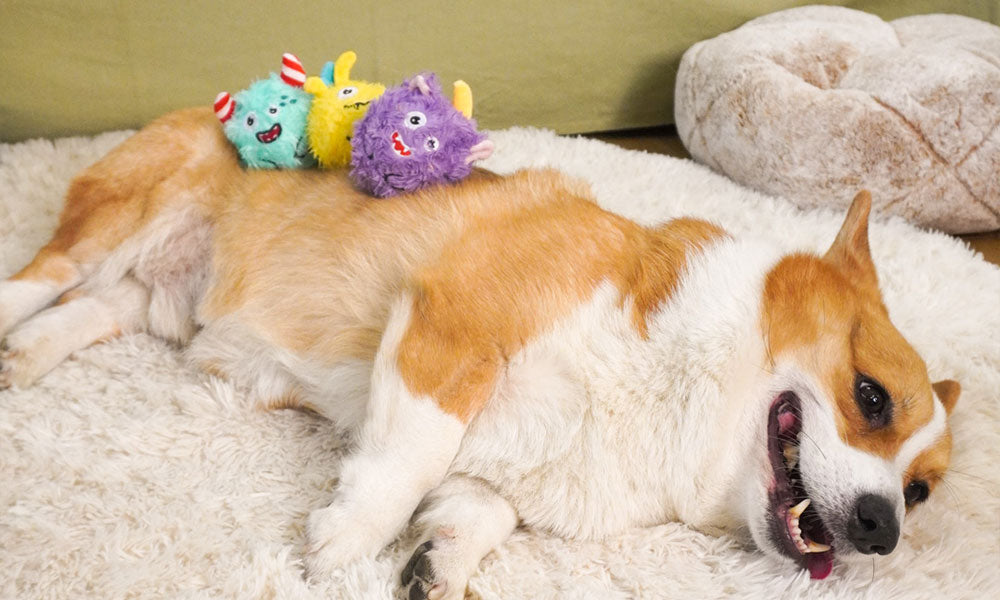How to Stop Dog from Chewing Furniture?

Share
You love your dog, but not so much the shredded couch cushions and chewed-up table legs. Sound familiar? Don’t worry—you’re not alone. Chewing is a common canine quirk, but luckily, there are fun, effective ways to redirect that energy using interactive dog toys.
Why Do Dogs Chew on Furniture?
Puppy Teething Woes
Just like human babies, puppies chew to relieve the discomfort of teething. Furniture legs are, unfortunately, just the right size and texture.
Boredom and Loneliness
Ever heard the phrase "idle paws are the devil’s workshop"? Dogs left alone too long get bored—and chewing becomes their entertainment.
Anxiety and Stress Relief
Chewing can calm anxious pups. It's their way of self-soothing, especially during thunderstorms or when left home alone.
The Dangers of Uncontrolled Chewing
Health Risks for Dogs
Splinters, choking hazards, and intestinal blockages—oh my! Chewing furniture isn’t just destructive, it’s dangerous.
Damage to Your Home
Let's be real: replacing a chewed-up coffee table isn’t cheap. And the sentimental value? Irreplaceable.
Interactive Dog Toys: The Ultimate Solution?
What Are Interactive Pet Toys?
Think toys that challenge your dog’s mind while engaging their body. Puzzle feeders, treat-dispensing balls, squeaky plushies—they come in all shapes and sizes.
How They Work
Instead of gnawing your chair legs, your dog focuses on "unlocking" treats or solving puzzles. It’s like mental gymnastics for dogs!
Top Benefits of Interactive Pet Toys
Mental Stimulation
Interactive toys keep your dog’s brain buzzing, which is just as important as physical play.
Physical Exercise
Chasing, pawing, nosing around—it all burns energy. A tired dog is a non-chewing dog.
Emotional Satisfaction
Dogs love winning. When they "solve" a toy, it boosts their confidence and happiness.
Choosing the Right Interactive Toy for Your Dog
Size Matters
Too big? Too small? Get the Goldilocks toy—just right for your dog’s mouth.
Durability Counts
Got a power chewer? Look for ultra-tough toys made of rubber or hard plastic.
Tailored to Your Dog's Personality
Is your dog a thinker or a bouncer? Choose puzzles for brainiacs and chase toys for high-energy pups.
Introducing Interactive Toys to Your Dog
Slow and Steady Wins the Race
New things can be scary. Introduce toys gradually—let your dog sniff and explore first.
Positive Reinforcement Works Wonders
When your dog interacts with the toy, reward them. Treats, belly rubs, or praise—whatever gets that tail wagging.
DIY Interactive Toys on a Budget
Tennis Ball Treat Puzzle
Cut a small slit in a tennis ball and stuff it with kibble. Instant entertainment!
Towel Roll-Up Snack Game
Wrap treats inside a towel, roll it up, and watch your dog "hunt" their reward.
Training Tips to Stop Chewing
Redirecting Behavior
Gently move your dog away from the furniture and towards their toy. Consistency wins.
Consistency is Key
Mixed messages confuse dogs. Be patient and stick to your rules every single day.
Creating a Dog-Friendly Environment
Safe Zones and Chew-Friendly Areas
Designate specific spots where your dog can relax and chew safely.
Furniture Protection Hacks
Try bitter sprays, slipcovers, or even physical barriers to protect your furniture.
Common Mistakes Dog Owners Make
Punishment vs. Correction
Yelling or punishment can backfire. Redirect with love, not anger.
Neglecting Daily Exercise
A tired dog is a well-behaved dog. Walks, playtime, and brain games are essential.
Happier Dogs, Happier Homes
Chewing is natural, but that doesn’t mean your furniture has to suffer. With the right interactive pet toys, a dash of patience, and some smart training, you can redirect your dog’s chewing into healthy, happy habits. Your dog stays busy, your couch stays intact, and everyone wins.
FAQs
Q1: How long does it take to stop a dog from chewing furniture?
It varies. Some dogs learn in a week, others take a month. Consistency is key.
Q2: Are interactive toys safe for all dogs?
Mostly yes, but always supervise the first few times and choose age- and size-appropriate toys.
Q3: Can I use treats all the time to encourage toy use?
Yes, but moderation matters. Mix in praise and play so it's not all about food.
Q4: My dog loses interest in toys quickly. What can I do?
Rotate toys every few days to keep things fresh and exciting.
Q5: Is chewing ever a sign of something serious?
Yes, if it’s obsessive or sudden, consult a vet or trainer to rule out anxiety or medical issues.




